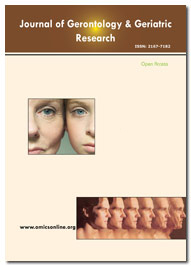索引于
- 打开 J 门
- Genamics 期刊搜索
- 安全点亮
- 参考搜索
- 哈姆达大学
- 亚利桑那州EBSCO
- OCLC-WorldCat
- 普布隆斯
- 日内瓦医学教育与研究基金会
- 欧洲酒吧
- 谷歌学术
分享此页面
期刊传单

抽象的
Remote Monitoring of Cardiac Implantable Systems in Those Over 80 Years of Age
Safarikova I, Bulava A and Hajek P
Introduction: Remote Monitoring (RM) is increasingly employed in all types of Cardiac Implantable Devices (CIED). However, there are no data on the acceptance of RM by the elderly population.
Aim of the study: The aim of our study was to ascertain how patients over 80-years-of age, with a CIED, perceive one of the commercially available RM systems (i.e., Home Monitoring® (HM), Berlin, Germany), and what concerns or technical problems the system presents.
Methods: The study was designed as a descriptive, retrospective, single-center study. The study population consisted of all consecutive patients over 80-years-of age who were identified from our CIEDs database and who had undergone implantation of a Pacemaker (PM) or an Implantable Cardioverter-Defibrillator (ICD) between the years of 2009 and 2018 and using a HM system. All patients fulfilling entry criteria were approached with a request to complete a survey.
Results: One hundred and twenty-three patients (48 with a PM, 75 with an ICD) were identified and questioned during the survey. A total of 110 (89%) valid surveys were obtained. Most of the patients (92%) were satisfied with the necessity of undergoing ambulatory follow-up only once a year. All patients (100%) reported that they were satisfied with the HM system. However, 43% of patients were completely unaware of any health-related benefits associated with its use. Among the most frequently reported personal benefits of HM were a sense of safety and security (44%) and saving on travel expenses and time (27%). Of the respondents, 95% reported that they had not been afraid when they first started using the HM system. Before and after device implantation, 24% and 99% of patients, respectively, reported receiving information from a doctor. None reported receiving information from a nurse.
Conclusion: The HM system was well accepted by those over 80-years-of-age. Almost half of the patients did not have a complete understanding of the many benefits of the HM system in terms of their health. These results highlight the need for better patient education on remote monitoring technology, with one option being to delegate more of this education to specially trained nurses.